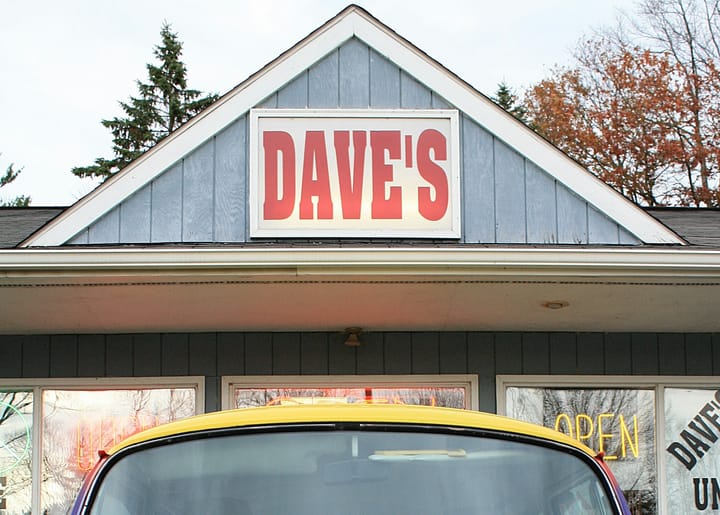Unite Your Target Audience with This Killer Creative Tactic

What if the key to connecting with your consumers wasn’t just about knowing who they are but also understanding who they are not? In this post, we explore a powerful creative tactic: uniting your target audience by strategically dismaying or rejecting an "anti-target" audience. Let's dive in.
Understanding the Power of Antagonists in Marketing
At its core, marketing is about storytelling, and every great story needs a compelling antagonist. An "antagonist" in marketing isn't necessarily a villain but rather a figure, group, or idea that contrasts with your target audience's values or desires. Antagonists can be:
Consumer Antagonists: Individuals or groups whose tastes or lifestyles starkly differ from your desired customers.
- Brand Antagonists: Competitor brands or entities that represent what your brand is against.
- Status Quo Antagonists: Norms or traditional ideas that your brand aims to challenge or disrupt.
- Thwarted Antagonists: Threats or negative forces that your brand protects its audience from.
Using these antagonists, you can craft a narrative that not only appeals to your target audience but also unites them against a common "enemy." This emotional connection fosters loyalty, drives engagement, and differentiates your brand in a crowded marketplace.
The Role of Anti-Heroes and Dismay Tactics
Anti-heroes or antagonists can sharpen your brand positioning and make your messages more memorable. By creating campaigns that dismay or alienate those who don’t align with your brand values, you can reinforce your appeal to those who do. For example:
- Dubai Properties' “1/JBR: It’s Not For Everyone” Campaign: This campaign dismayed potential buyers who were looking for flashy, ostentatious luxury. Instead, it appealed to those who valued understated elegance. By boldly stating that these high-end apartments had "no bling or gold," Dubai Properties positioned itself as a brand for sophisticated, discerning buyers. The tactic here was clear: make the product’s unique benefit a point of dismay for the anti-target audience.
- Audi’s Rejection of the “Brash City Boy”: Audi’s campaign embraced the idea that their vehicles were not meant for the stereotypical flashy urbanite. Instead, they highlighted qualities that would resonate with family-oriented or mature consumers. By deliberately dismaying an audience that did not align with their core values, Audi strengthened their connection with their ideal customers.
These examples demonstrate the effectiveness of using dismay tactics. By showcasing how your product or service doesn’t cater to certain groups, you naturally build a stronger bond with the audience you do want to attract.
Creative Examples of Dismaying Consumer Antagonists
Some brands go a step further by creatively disguising their products or positioning them to deter non-target consumers:
- Oreo Thins Protection Program: Oreo Thins cleverly positioned itself as a treat for adults who want to enjoy their cookies without them being stolen by kids. The campaign humorously disguised Oreo Thins as items kids would not find interesting, like boring office supplies, allowing adults to hide the biscuits in plain sight. This tactic made the product more appealing to the adult audience while creating a playful sense of exclusivity.
- Halo Ice Cream’s “Ice Cream for Adults” Campaign: Halo positioned its low-calorie ice cream as an indulgence meant solely for adults, excluding children from enjoying the treat. By focusing on adult enjoyment and subtly dismaying children, the campaign created a fun, tongue-in-cheek way to connect with health-conscious adults who still love a good dessert.
These campaigns demonstrate how brands can use humor, creativity, and strategic positioning to align their messaging with their target audience while distancing themselves from those who don’t fit.
Dismaying Brand and Status Quo Antagonists
Brands can also effectively target competitors or established norms as antagonists to unite their audience:
- OVO Energy’s “Renewable is Unstoppable” Campaign: OVO Energy positioned itself against those who resist solar power, turning the behavior of a person who despises solar energy into a rallying cry for their eco-conscious customer base. By making the antagonist’s annoyance a badge of honor, OVO strengthened its relationship with customers who shared its values.
- Volkswagen’s “Trailer Assist” Campaign: Volkswagen turned an everyday challenge — reverse parking a trailer — into a creative opportunity. Their campaign showed horses dismayed by the ease with which VW drivers could park a trailer, challenging the status quo that trailer parking must be difficult. This playful approach appealed to drivers who appreciate innovation and practicality, setting Volkswagen apart in the automotive market.
By positioning their brands against outdated or opposing values, these companies created narratives that resonate deeply with their audiences.
Thwarting Antagonists to Protect Your Audience
Brands can also build trust and loyalty by protecting their audience from perceived threats:
- Mobily’s Protect Set Campaign: Mobily, a telecommunications brand, launched a creative campaign to protect children from online predators by turning their voices into older-sounding ones when playing online. This strategy directly thwarted the antagonists (predators), thereby positioning the brand as a protector and ally to parents concerned about online safety.
These tactics demonstrate how brands can effectively use antagonists to show their commitment to the well-being and values of their target audience.
Key Questions for Marketers to Consider
To harness the power of antagonists and dismay tactics in your marketing strategy, ask yourself:
- Who can you put off on behalf of your target audience?
- Which antagonist’s preferences did your innovation disrupt?
- How can you use dismay or thwart tactics to unite your target audience?
- What message will strengthen your target audience's bond with your brand by rejecting the values of an unwanted group?
Summary
In a world where attention is fleeting, and loyalty is rare, standing out requires more than just traditional tactics. By strategically identifying and dismaying an “anti-target” audience, you can create deeper emotional connections with those who matter most. Don’t be afraid to embrace a bit of controversy, reject what doesn’t serve your brand, and unite your audience with creative, compelling storytelling.



